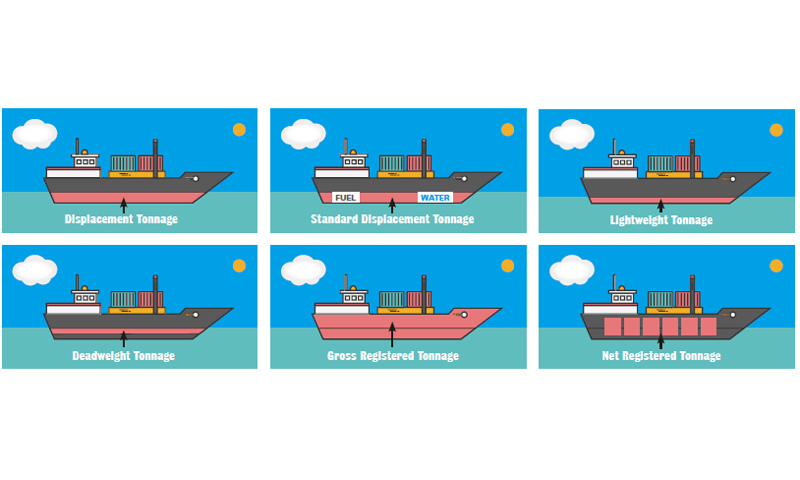
If you like getting frustrated, and who doesn’t, you could do no better than trying to understand the nautical terms associated with tonnage. We have long tons, short tons, avoirdupois tons, imperial tons, gross register tons, gross tons, net register tons, net tons, deadweight tons, metric tons, tonnes, tuns, and just tons and tons of fun.
There are three concepts here which are vaguely related, and by distinguishing these we can eliminate a whole lot of confusion, but not all.
The first is the idea of displacement, a measurement of weight. According to tradition, this was discovered by Archimedes in his bathtub. It’s the weight of the water displaced when you put something in it. Imagine placing a floating box in a tub of water filled to the brim. The weight of the resultant spilled water is the displacement of the vessel in question. Since the box is hollow we are only measuring the weight of the empty box. In ships this is expressed in long tons, which equal 2,240 pounds, or the nearly equivalent metric tons (tonnes), which equal 1000 kilograms or 2204.6 pounds.
The second idea is deadweight tonnage or DWT, another measure of weight. This is the weight of just the cargo, or alternatively, the maximum carrying capacity of the ship. It is expressed in long tons or metric tons. Adding cargo to our box above increases the total displacement, and will immerse it lower in the water. How much cargo a boat can carry by weight is a safety issue; we don’t want it to sink. But how much it can carry by volume is an issue for the tax man. So we have….
The third concept, which is gross register tonnage (or GRT), a measurement of volume. Two vessels of the same displacement may have different internal volumes if one is made from carbon fiber and another made of steel. It is the internal volume, not the displacement, that is used to calculate taxes and fees. This volume is confusingly expressed as “register tons,” even though it is not a measurement of weight. A register ton is equal to 100 cubic feet. But to measure the functional capacity of the ship, we need to subtract tanks, engines, crew space, and any other space not usable for cargo. The result is net register tonnage (or NRT), also measured in register tons.
More next time on tonnage.

Such a weighty topic…